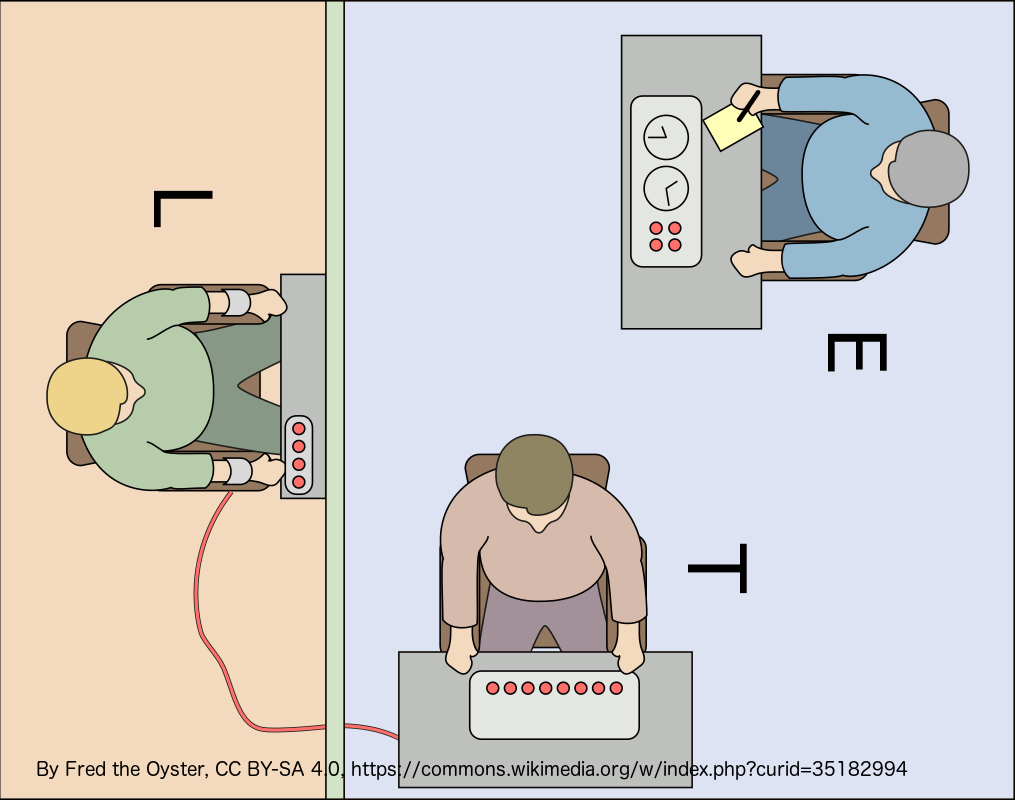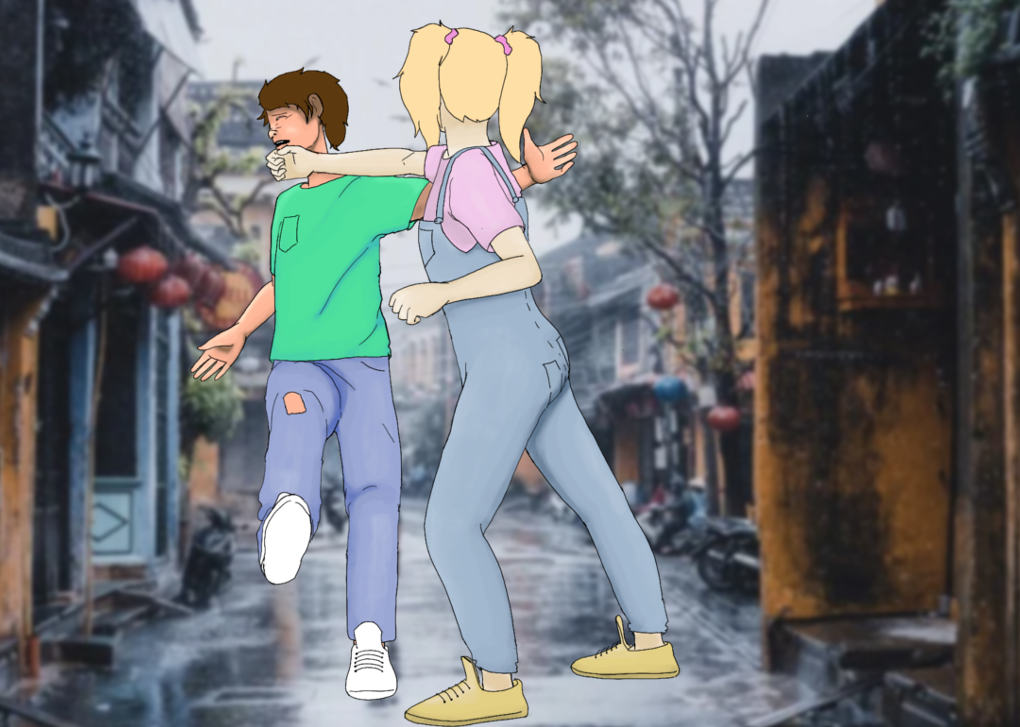
|
 |
 |
|
 |
The world is a dangerous place to live, not because of the people who are evil, but because of the people who don’t do anything about it, Albert Einstein.
Blind obedience is present in our history from the dawn of time. Abraham obeyed God by sacrificing his only son (although he was stopped by an angel of the Lord): “Some time later God tested Abraham; he called to him, “Abraham!” And Abraham answered, “Yes, here I am!” “Take your son,” God said, “your only son, Isaac, whom you love so much, and go to the land of Moriah. There on a mountain that I will show you, offer him as a sacrifice to me,” Gen 22, 1-2. 
However, we don’t need to go as far back in time as that. Wars are always brutal, barbaric, and unnecessary. War is particularly traumatic for soldiers because it often involves intimate violence, including witnessing death through direct combat, viewing the enemy before or after killing them, and watching friends and comrades die (Physical and Mental Health Costs of Traumatic War Experiences Among Civil War Veterans). Besides, many civilians suffered all kinds of abuse: rape, beatings, torture, and mutilation.

During the Vietnam War many acts of brutality were committed by soldiers on both sides. Nevertheless, one particularly horrifying incident has shocked people all around the world. “On the morning of March 16, 1968, a company of U.S. soldiers killed as many as 500 unarmed Vietnamese civilians in My Lai, a village in South Vietnam,” cbsnews.
According to Paul Meadlo, a soldier who participated in the My Lay massacre, the leader of the operation, Lieutenant William Calley, ordered his men to shoot everyone in the village. Let me show you a transcript of a Mike Wallace interview with Paul Meadlo on November 24, 1969, in which he describes his participation in the My Lai massacre:
Q. So you fired something like sixty-seven shots? A. Right. Q. And you killed how many? At that time? A. Well, I fired them automatic, so you can’t ― You just spray the area on them and so you can’t know how many you killed ‘cause they were going fast. So I might have killed ten or fifteen of them. Q. Men, women, and children? A. Men, women, and children. Q. And babies? A. And babies. Q. Now, you’re rounding up more? A. We’re rounding up more, and we had about seven or eight people. And we were going to throw them in the hootch, and well, we put them in the hootch and then we dropped a hand grenade down there with them. And somebody holed up in the ravine, and told us to bring them over to the ravine…. [T]hey had about seventy, seventy-five people all gathered up. So we threw ours in with them and Lieutenant Calley told me, he said, “Soldier, we got another job to do.” And so he walked over to the people, and he started pushing them off and started shooting…. And so we started pushing them off, and we started shooting them, so all together we just pushed them all off, and just started using automatics on them… Partial transcript of the Mike Wallace interview with Paul Meadlo.
How is that possible? A classic experiment was made by Stanley Milgram in 1974. It was designed to discern how we negotiate the conflict between obedience to authority and personal conscience. They wanted to know how far people would go in obeying an order if it involved harming another person.
There were three roles: the experimenter or researcher, the teacher (the true subject of study) and the learner who was one of Milgram’s confederates and pretended to be a real participant. It was explained that the study was aiming to determine the effects of punishment on learning. The learner was placed into a room where the teacher thought he was being strapped into a real electric chair, they tied the student’s arms to prevent excessive movement and had electrodes attached to his wrists. The teacher and researcher went into a room next door that contained an electric shock generator and a panel of thirty lever switches marked from 15 volts to 450 volts. The switches were also clearly tagged with the following labels to facilitate interpretation: moderate shock, strong, very strong, intense, extremely intense, danger: Severe shock and XXX.

The “learner” had supposedly studied a list of word pairs. The “teacher” would test him by naming a word and ask him to recall its pair from a list of four possible choices. Each time the student made a mistake, he received electric shocks with increasing intensity. Of course, everything was fake and the “student” did not get any electric shocks at all.
The conflict arose when the alleged student failed. “At 75 volts, he grunted; at 120 volts, he complained loudly; at 150, he demanded to be released from the experiment. As the voltage increased, his protests became more vehement and emotional. At 285 volts, his response could only be described as an agonized scream. Soon thereafter, he made no sound at all,” The Perils of Obedience, Stanley Milgram.
The “teacher” was immediately immersed in an intense conflict. The manifest suffering of the “student” made him want to stop, but the experimenter ordered him to continue: “The experiment requires that you go on until he has learned all the word pairs correctly,” “The shocks may be painful but they’re not dangerous,” “It is absolutely essential that we continue…,” and “You have no other choice.”
Results: 65% of participants, twenty-five obeyed the orders of the experimenter to the end, and by doing so, they reached the most potent shock available on the generator, 450 volt. This experiment has been replicated in Princeton, Munich, Rome, South Africa, and Australia to prove that these results can be generalized, and that they were just normal people like you and me.
“This is […] the most fundamental lesson of our study: ordinary people […] can become agents in a terribly destructive process. Moreover, even when the destructive effects of their work become patently clear, and they are asked to carry out actions incompatible with fundamental standards of morality, relatively few people have the resources needed to resist authority,” The Perils of Obedience, Stanley Milgram.

There are certain factors that mediate this effect: physical proximity between the “teacher” and the “student” (a shorter distance to the victim means less obedience to the experimenter) or between authority and participant, having co-participants who willingly (and without questioning) obey the experimenter, etc.
A second study was designed by Philip Zimbardo at Stanford. The theoretical base is that we live in institutions and structures that shape who we are, such as family, school, religious institutions, media, civil society organizations, clubs, etc. We are assigned or adopted certain “roles” and we play them out unconsciously while interacting with others. We look to see what others like us are doing and then act accordingly, even if certain behaviors or actions do not fit with our morality: “It can’t be wrong because everybody does it.”
Zimbardo designed the Stanford Prison Experiment. He divided subjects into two groups: prisoners and guards, and set up a mock prison in the basement of the Stanford psychology department. He selected 24 undergraduates who had no criminal records, lacked psychological issues, and were perfectly healthy. They were offered fifteen dollars per day for participating in an experiment that simulated a prison that was scheduled to last fourteen days.

The “prisoners” were kept in the “prison” for 24 hours a day, while the “guards” performed eight-hour shifts. Surprisingly, this study had to be cut short after just six days because it was all spinning completely out of control. The “guards” became abusive, increasingly sadistic and cruel throughout the experiment, while the “prisoners” became depressed and stressed out.
What are the conclusions of the experiment? According to its author: “The line between good and evil is permeable and almost anyone can be induced to cross it when pressured by situational forces,” and also: “most of the people in this study derive their sense of identity and well-being from their immediate surroundings rather than from within themselves, and that’s why they broke down — just couldn’t stand the pressure — they had nothing within them to hold up against all of this.”
“It is […] like a Greek drama. It […] reveals the extent to which our behaviour can be transformed from its usual set point to deviate in unimaginable ways, even to readily accepting a dehumanized conception of others, as “animals,” and to accepting spurious rationales for why pain will be good for them. […] We humans exaggerate the extent to which our actions are voluntary and rationally chosen — or, put differently, we all understate the power of the situation,” Philip Zimbardo.

However, the problem remains: What can we do? Can we resist authority and the context or situation in which we live? Perhaps, these are the most important questions, but the answer is far less clear.
Human beings are social animals, we seek other people’s approval by showing them we are just like them. We fear social rejection, we desire to achieve a common goal, we have a need to belong to the group, and we also sometimes hold the belief that the group may know more than us.
Consequently, very few are able to question authority or unjust institutions, at the expense of being excluded from society, friends, neighborhood, workplace, etc., even being penalized and punished. The power of conformity (“because everybody does it”) is clearly demonstrated. It has been defined as the need to “fit” in, to be like everyone else, to behave as they behave, to think as they think… It is the fear of being different, fear of being rejected, losing prestige or being branded as ‘odd’.
Social influence is a more general term that includes both conformity and obedience. It occurs when one’s emotions, opinions, or behaviors are affected by others. It takes many forms: conformity, socialization, peer pressure, obedience, leadership, persuasion, sales, and marketing. For instance, many young people feel peer pressure to have early sex, try drugs, smoke cigarettes, and make bad choices; adults feel strong pressures to consume and are prepared to borrow to do so, etc.
Is everything lost? Not at all, as Mahatma Gandhi put it: “As soon as someone realizes that obeying unjust laws is contrary to the dignity of man, no tyranny can dominate.” His words and example (in his fight against the British rule in India by peaceful means) show us that we can and we should question authority when it abuses its power - we should act even if others do nothing! We need to fight peacefully for human rights and social justice, for the respect and dignity of each and every person.

Throughout history, it has been the inaction of those who could have acted; the indifference of those who should have known better; the silence of the voice of justice when it mattered most; that has made it possible for evil to triumph, Haile Selassie.